Paper Proposal: 500 GeV EEMC Dijet $A_{LL}$}
Title: Measurements of longitudinal double-spin asymmetries for dijet production at intermediate pseudorapidity in polarized pp collisions at \sqrt(s) = 510 GeV
PAs: W.W. Jacobs, J.H. Kwasizur, S.W. Wissink
Target Journal: Physical Review D Letters
Abstract: Measurements of the longitudinal double-spin asymmetry ALL are presented for dijets with at least
one jet reconstructed within the intermediate pseudorapidity range 0.9 < \eta < 1.8. The dijets are produced in
polarized pp collisions at a center-of-mass energy \sqrt(s) = 510 GeV at STAR, probing possible contributions
of gluons to the proton spin down to values of Bjorken-x ~ 0.01 in the most forward of the dijet topologies studied.
In regions of kinematic overlap, the measured asymmetries are generally consistent with predictions from global
analyses that have incorporated previous RHIC results, but will provide new constraints on the shape and magnitude
of the gluon helicity distribution, \Delta g(x), in the poorly constrained low-x region.
Paper Draft:
TBD
Analysis Note:
Version-_v1.0 (pdf)
Presentations and Links:
Run12 Endcap Dijet Asymmetries Preliminary Request Page
Run13 Endcap Dijet Asymmetries Preliminary Request Page; includes updated Run12 Endcap Dijet Asymmetries
Endcap Dijet A_LL Figures for Run12, Run13, and Run12+Run13
STAR Collaboration Meeting - Feb. 2022
DIS 2022 talk
Analysis Code:
TBD
Supplementary Materials:
TBD
Draft Conclusions: In summary, STAR collaboration measurements are presented of the longitudinal
double spin asymmetry $A_{LL}$ for dijets detected at intermediate pseudorapidities, arising from
polarized $pp$ collisions at $\sqrt{s} = 510$ GeV from RHIC runs during 2012 and 2013. Dijet
measurements provide greater constraints on the initial partonic kinematics than do inclusive
measurements and hence can be more sensitive to the shape of $\Delta g(x)$. In addition, compared to
previous results, the combination of $pp$ collisions at the highest RHIC center-of-mass energies, and
extended to more forward pseudorapidities,enables incresed sensitivity of the present $A_{LL}$ results to
lower values of Bjorken-$x$.
The final run 12 and 13 summed $A_{LL}$ results, corrected back to the parton level, and binned by dijet
invariant mass for the several pseudorapidity ranges studies, generally support the most recent DSSV and
NNPDF predictions. Particularly for West Barrel-Endcap and Endcap-Endcap topologies, inclusion in
global analyses will most likely reduce the uncertainties on $\Delta g(x)$ without significantly changing the
values. Onthe other hand, the present East Barrel-Endcap data are significantly more positive than the
theoretical predictions in the higher invariant mass bins and may help pull the fits toward larger values of
$\Delta g(x)$ in that $x$ range.
A combined plot of dijet $A_{LL}$ data versus $M/\sqrt{s}$ of the previous intermediate pseudorapidity
results from 200 GeV, along with the present analysis values for 510 GeV, clearly indicate the additional
reach of the current data set. The unique 510 GeV data at low $M/\sqrt{s}$, sensitive at the lowest $x$, has
good statistical precision with the values appearing also slightly above predictions, and hence may have
impact on global fits when included..
Proposed Figures:
[--- placeholder kinematic -- MC vs. data comparison]

Figure. 1: Dijet invariant mass distributions compared to MC simulation for JP2 in 2012 (left) and 2013 (right).
[--- placeholder -- machine learning corrections figure]
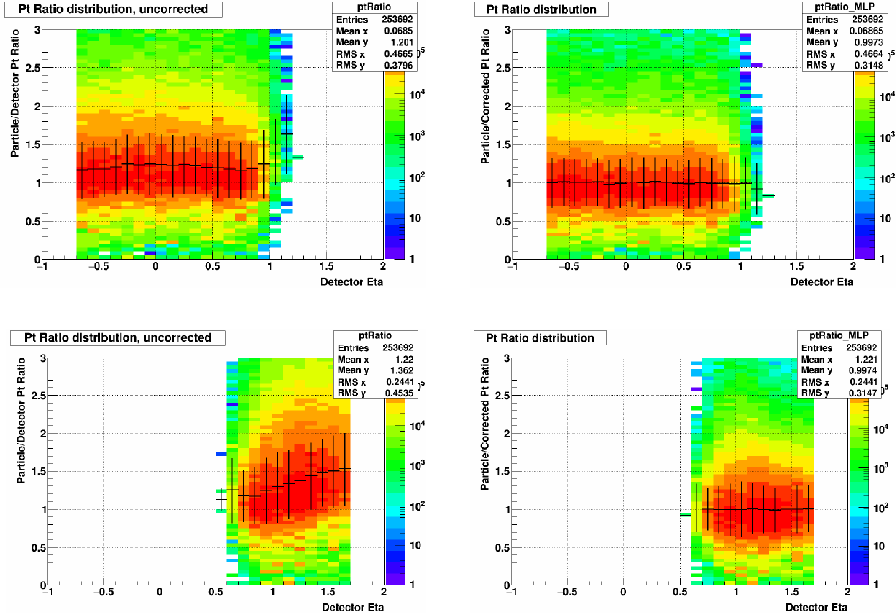
Figure. 2: Jet particle/detector pT ratio vs. detector \eta, before (left) and after (right) the machine learning pT shift for Barrel jets (top row) and Endcap-Endcap jets (bottom row). In each plot, the black symbols and vertical bars indicate the mean and RMS, respectively, of the distribution in each bin. Events are from the 2012 embedding sample.
[--- probably want to pick a just a portion of this figure, then make lines and annotation more visible]
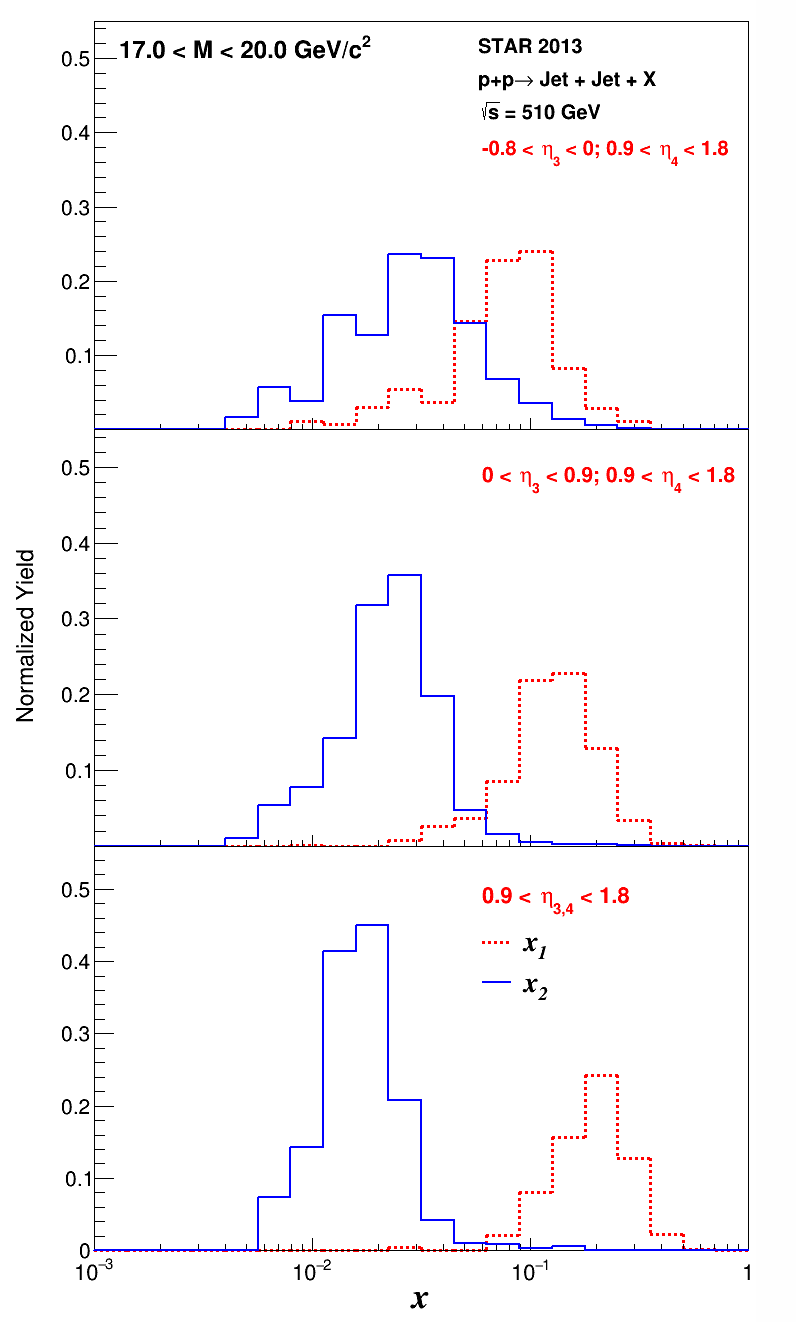
Figure 3: Distributions of parton x1 (red, dotted) and x2 (blue, solid) from leading order simulation, weighted by the partonic asymetry, for dijet events at \sqrt{s} = 510 GeV. The dijet topologies shown are for East Barrel-Endcap (upper plot), West Barrel-Endcap (middle plot), and Endcap-Endcap(lower plot).

Figure 4: Dijet ALL versus parton-level dijet invariant mass in the Barrel-Endcap full topology for the combined 2012 and 2013 data.
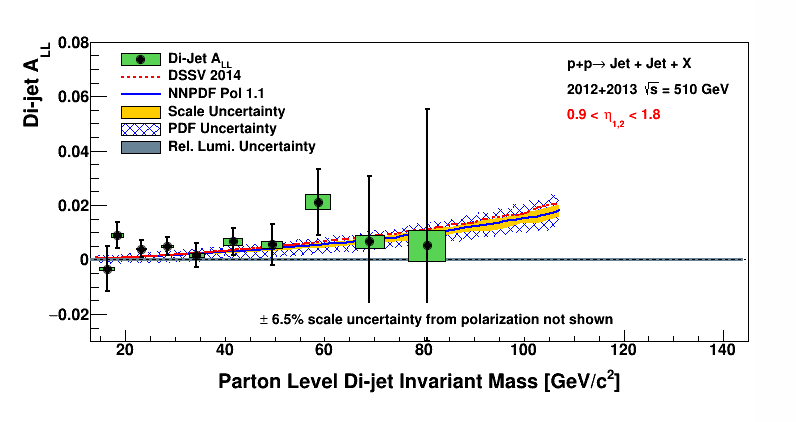
Figure 5: Dijet ALL versus parton-level dijet invariant mass in the Endcap-Endcap topology for the combined 2012 and 2013 data.
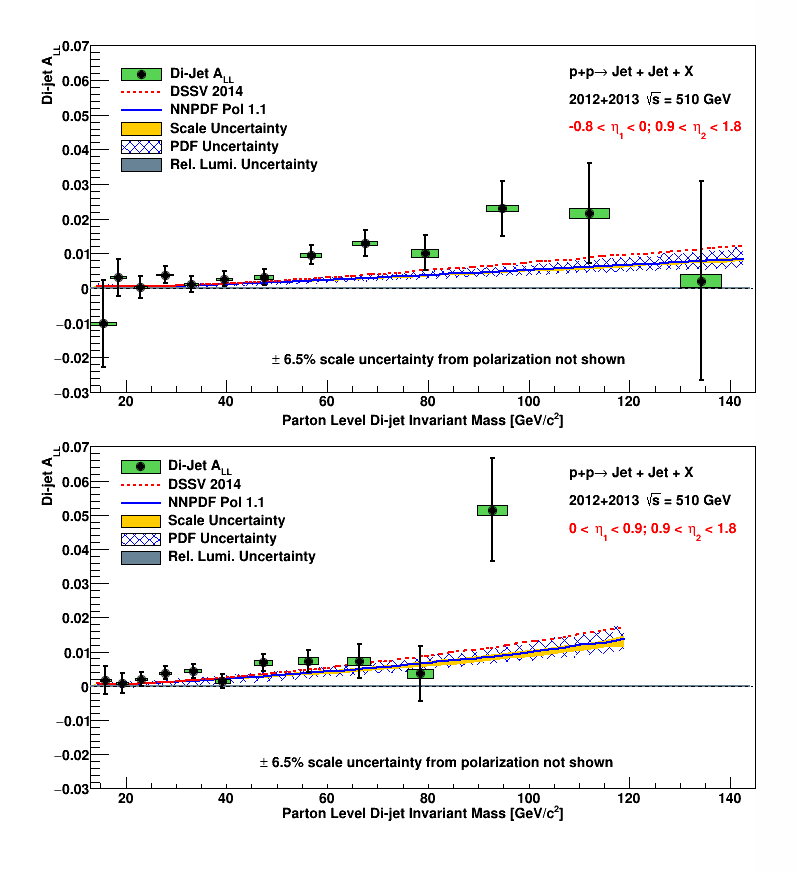
Figure 6: Dijet ALL versus parton-level dijet invariant mass in the East Barrel-Endcap (upper plot) and West Barrel-Endcap (lower plot) topologies for the combined 2012 and 2013 data.
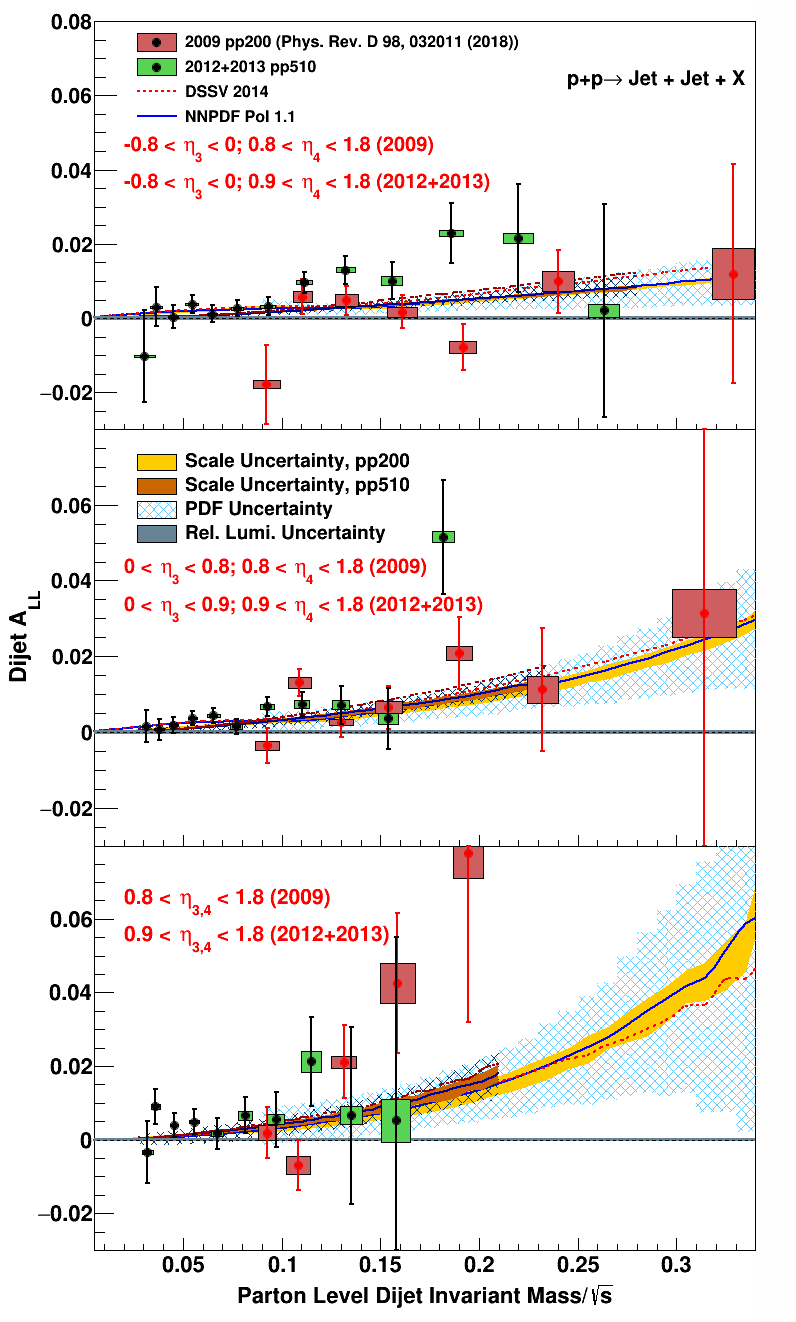
Figure 7: Longitudinal asymmetry ALL as a function of Minv for dijets measured in 2012 and 2013 at \sqrt{s} = 510 GeV compared with data from 2009 at \sqrt{s} = 200 GeV. Results are shown for the East Barrel-Endcap (top plot), West Barrel-Endcap (middle plot), and Endcap-Endcap (bottom plot) topologies.
- wwjacobs's blog
- Login or register to post comments
